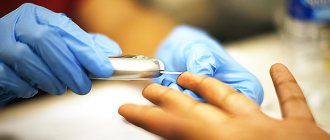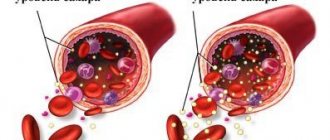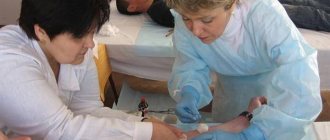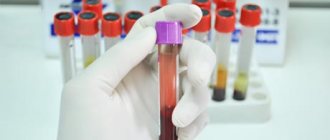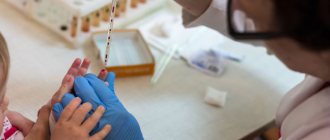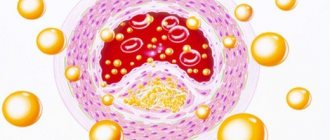Throughout the day, the level of glucose in the blood changes several times. The indicators are influenced by the qualitative and quantitative composition of food, physical activity, and neuropsychological state. The level of blood sugar after eating depends on the individual characteristics of carbohydrate metabolism. In older people, normative values shift upward due to an age-related decrease in cell sensitivity to insulin.
Some disturbances in the absorption of carbohydrates may occur in women during pregnancy and menopause. In a healthy person, ideal glucose levels after meals should not exceed 7.7 mmol/l (millimoles per liter - a unit of measurement of sugar). If the values are consistently elevated, diabetes mellitus or prediabetes is diagnosed. The prediabetic condition is characterized by the inability of body tissues to adequately absorb sugar, and glucose tolerance is impaired.
Acceptable sugar levels
You can donate blood for sugar at a medical center. It is taken mainly from a finger; for a more detailed analysis, it can also be taken from a vein. Samples are taken on an empty stomach. In this case, drinking water without gas is allowed.
The norm for sugar in a finger prick blood test for a healthy person is a value between 3 and 5. It is also necessary to remember that on the eve of the test it is prohibited to drink alcohol. If a person does not comply with the instructions, when taking the test, this may affect the accuracy of the procedure. The level of sugar in the blood after eating also depends on the age of the person; the norm is:
- after 60 years from 4.6 to 6.4;
- up to 60 from 4.1 to 5.9.
In pregnant women, the value ranges from 3 to 6 mmol/l, since in the period before the birth of the child the body undergoes restructuring.
According to official data, glucose levels in older people differ significantly from younger people. This is due to the fact that some of them do not normalize sugar due to possible imminent death. For a long life, it is necessary to ensure that even healthy people maintain normal levels. Do not forget that such a serious disease as diabetes can be controlled at any age. The problem is motivating people who are over 60. It must be remembered that advanced diabetes can lead to coma. To prevent this, you can take pills and inject insulin.
Normal glucose levels after meals
Biological blood fluid is not taken to determine the degree of glycemia in patients immediately after eating. According to medically approved algorithms, analysis to detect blood sugar is done at clear intervals.
The objective picture and dynamics of glucose levels in the body after a meal is reflected by a clinical laboratory blood test:
- after 60 minutes;
- 2 hours after eating;
- after 3 hours.
After eating food, many chemical and biological reactions occur in the body, including the breakdown of substances under the influence of insulin. The hormone begins to be actively produced by the pancreas 10 minutes after food, drinks enter the digestive system or consume a medical glucose solution. The highest sugar levels should be detected after 60 minutes.
The dynamics of changes in the amount of sugar on an empty stomach and after a meal in the blood fluid is displayed in the form of a curve. Normally, in a healthy person, after 60 minutes the result of the glucose level in the body does not exceed the threshold of 8.9 mmol/l. After reaching the peak, a decrease in glycogen homeostasis is observed. The second sampling of biological material is done after 120 minutes and blood parameters are measured. The upper limit of the normal range is 7.8 mmol/L. Without consuming sugary drinks, medications or food, the glucose level should return to its original values after 3 hours.
For children
Regular monitoring of blood sugar levels in children is necessary for the timely detection of hormonal disorders. Due to the high consumption of sugary foods and drinks, minors are at high risk of developing diabetic pathology. Periodic blood donation on an empty stomach will detect hyperglycemia in the early stages and prevent the progression of the disease.
The need to control sugar parameters is associated with the specific course of diabetic disease. The pathology can be asymptomatic and manifest itself during puberty, as well as during intensive physical development.
According to medical standards, it is required to conduct studies to eliminate the risk of hyperglycemia during the following periods:
- first days of life;
- 4 years;
- 7 years;
- 11 years.
At this age, increased production of insulin by the pancreas is observed in the children's body. This is due to active growth. Cells need large amounts of glucose to replenish energy resources. Hormone deficiency causes insulin-dependent diabetes. In representatives of the adolescent group, type 2 diabetic pathology is more often observed without dependence on the insulin component. The disease develops against a background of physical inactivity and eating disorders.
| Age category, years | Parameter, mmol/l |
| First days of life | 2,2-3,3 |
| Up to 1 year | 2,5-4,7 |
| 1-6 | 3,0-5,1 |
| 7-18 | 3,3-5,5 |
When taking blood from infants and children under 12 years of age, the curve showing the dynamics of the results of the breakdown of carbohydrate components differs from the graph for adults. 1 hour after taking a meal or glucose solution, the normal blood sugar level does not exceed 8 mmol/l.
Results close to the upper limit of the norm indicate a borderline condition. The child needs to be screened for prediabetes. Parameters exceeding 7 units indicate a risk of diabetic pathology.
Important! Due to interval feeding of infants, it is not possible to maintain a fasting period of 8 hours. Blood sugar levels are taken from newborns 120 minutes after feeding.
Exceeding the norm may be due to infection of the body with helminths, excessive physical activity shortly before the test, acute respiratory viral infection, improper preparation for blood sampling, or taking medications. Excess glucose in the bloodstream is caused by antibiotics, diuretics, anti-inflammatory and vasoconstrictor medications.
For adults
In the body of a woman and a man there are no big differences in the mechanism of breakdown of sugar coming from food or drinks. The female digestive and endocrine system produces chemical and biological reactions faster, so glucose enters the cells earlier.
An important parameter when measuring blood sugar is measurements after 2 hours. Based on the results obtained, conclusions are drawn about glucose tolerance. Parameters ranging from 7.8 mmol/l serve as a signal for the need for additional examination of an adult to exclude or diagnose diabetes.
| Category | On an empty stomach, mmol/l | Collection after 60 minutes, mmol/l | Blood collection after 2 hours, mmol/l | Analysis after 3 hours, mmol/l |
| Healthy | Up to 5.6 | Up to 8.9 | Up to 7 | Up to 5.6 |
| Type 1 diabetes | 7,9-9,1 | Until 11 | To 10 | Up to 9 |
| Type 2 diabetes | 7,9-9,1 | Up to 9 | Up to 8.7 | Up to 7.5 |
If, during a study at intervals, it is revealed that blood sugar rises more than normal, additional tolerance studies are carried out. To exclude or confirm diabetic pathology, a glucose tolerance test is performed. The method consists of consuming a glucose solution in a strict dosage and analyzing the biological fluid.
The person being examined is given a glass of filtered water with the addition of 75 ml of glucose. In adults with diabetes, blood glucose results one hour after eating show significant differences compared to patients without endocrine disorders.
For diabetics
Blood sugar levels in the evening after meals are important in monitoring a patient with diabetes or borderline diabetes. People with diabetic pathology are recommended to use household glucometers to monitor their condition. The older the person, the higher the risk of disruption of the interaction between hemoglobin and the glucose component.
In medical institutions, special tests are carried out for different age categories to detect glycated hemoglobin (HbA1C). Studies of the qualitative composition of red blood cells show changes in the concentration of oxygen transported by the blood, since its quantity remains unchanged for about 3 months. Based on the data obtained, a conclusion is made about the degree of impairment of glucose breakdown and the severity of diabetic disease.
| Age category, years | Up to 40 | 41-45 | 46-65 | Over 66 |
| Normal parameters | 6,5 | 7,0 | 7,5 | 7,7 |
| Tolerance | 7,0 | 7,5 | 8,0 | 8,2 |
| The need to register with a diabetologist | More than 7.1 | More than 7.6 | More than 8.1 | More than 8.3 |
The glycemic fluctuation curve changes several times during the day and depends on:
- meals;
- composition of dishes and drinks;
- medications taken;
- physical activity;
- emotional mood.
It is believed that the lowest level of glucose in the bloodstream is observed at night, during the rest period.
For people over 50 years old
Older adults are most at risk of developing hyperglycemia. This is due to a natural decrease in the production of hormones in the body, low mobility, and aging. Regularly checking your glucose levels will help prevent the onset of diabetic pathology.
A slight increase in blood sugar is considered normal in people over 50 years of age. Before this age limit, glucose levels in individuals without endocrine disorders should be within the acceptable range.
| Age group, years | Normal values, mmol/l |
| Up to 40 | 3,2-5,5 |
| 41-45 | 3,3-5,6 |
| 46-50 | 3,3-5,7 |
| 51-69 | 3,5-6,5 |
| Over 70 | 3,6-7,0 |
When collecting venous biological material, it is permissible to exceed the given parameters by 0.5 mmol/l. A blood test from a vein for research on many indicators is done for bedridden patients. Results close to the upper limit of the normal range indicate the possible onset of the pre-diabetic stage, and require additional examinations, diet, and re-testing of the material.
Important! When you consume any product, regardless of its composition, your blood sugar level will increase.
For the timely detection of hyperglycemic syndrome, the observing doctor prescribes a glucose tolerance test every 6 months. A person over 50 years old first donates blood on an empty stomach, then a biomaterial is collected after exercise (taking a glucose solution).
For pregnant
Active hormonal changes occur in the female body while carrying a child. Regular monitoring of glucose in the collected material will allow timely detection of hyperglycemia, prescribing competent therapy, and maintaining the health of the embryo and mother.
| Normal values, mmol/l | 60 minutes after exercise, mmol/l | Drawing 2 hours after eating, mmol/l |
| 3,2-6,0 | 6,7 | 6,0 |
Results of 3.3-6.0 mmol/l are considered normal for pregnant women. The detected excess requires the appointment of additional examinations. When repeating blood sampling after eating, the parameter should not exceed 7.8 mmol/l. When taking material from a vein, it is permissible to increase the obtained values to 0.5 units.
Medical standards allow an increase in glucose in the test blood of pregnant women to 11 mmol/l. If the level is repeatedly exceeded, the patient is examined for diabetic pathology. While pregnant, women may develop gestational diabetes. The disease develops against the background of hormonal imbalance and requires regular monitoring of sugar.
Diagnosing gestational diabetes requires a thorough examination and regular monitoring of blood sugar. The disease, left unattended, provokes the following consequences:
- risk of miscarriage;
- embryo death;
- a sharp increase in fat mass;
- development of vascular diseases;
- hypoxia in a child during the birth process;
- transformation to type 2 diabetes;
- endocrine disorders in the fetus;
- pathologies of the development of the nervous system, the skeleton of a pregnant child.
Diabetes in pregnant women is most often asymptomatic. Only clinical diagnostic blood tests will help identify a developing disease. A woman carrying a child with an approved diagnosis of gestational diabetes is recommended to regularly visit a medical facility to donate blood or self-monitor her sugar with a household glucometer. After delivery, the pathology disappears on its own in 90% of patients without treatment.
How does sugar concentration change?
After 1 hour, the blood sugar concentration in a completely healthy person may increase, and this is considered a good indicator. During the first hour, complex carbohydrates are broken down and glucose enters the blood. Insulin begins to be produced during the first minutes of food consumption, and then after another period of time a second release occurs. In a healthy person, the blood sugar level after eating increases after 1 hour, and then within 3 hours it begins to decrease and returns to normal.
During the day, glucose levels change as follows:
- before breakfast around 3-6;
- during the day about 3.9-6.3;
- one hour after eating – almost 9;
- after 2 hours – 6.7;
- at night – 3.8 maybe a little less.
You can independently check your blood sugar level after eating 1 hour using a glucometer; the procedure is done at home and takes a short amount of time.
Blood test diagnostics
Vizox is a natural remedy based on native plant extracts. More details
Thus, the result will be the most reliable, because there are many foods that help increase glucose levels.
By doing an analysis after eating, the patient can get high readings, which, in fact, were provoked by the consumption of a particular product.
When going to the clinic to donate blood for analysis, it is better to skip breakfast altogether or make some restrictions on foods. Only in this case can the most accurate result be achieved. In principle, you can also do a test for diabetes to rule out suspicions, if any.
Symptoms of onset of diabetes
In the very initial stage, diabetes does not manifest itself in any way, but there are a number of signs that will indicate that the sugar level is too high, then you need to contact a specialist.
Signs of diabetes:
- I want to drink, and constantly.
- Limbs go numb.
- Cuts or bruises on the body take a very long time to heal.
- Constant weakness and loss of strength.
- I often want to go to the toilet.
- Migraine.
- Increased appetite, but at the same time the person loses weight sharply.
If you encounter such symptoms, you must immediately take all tests at the clinic and undergo a medical examination.
A special analysis is carried out at the clinic, where the patient first donates blood on an empty stomach, and then drinks a special sweet solution. If the normal blood sugar level after a meal in a healthy person is exceeded after 2 hours, and the sugar level is higher than permissible, the patient is prescribed a comprehensive study, after which a specialist makes a diagnosis and prescribes treatment.
Consequences of hyperglycemia
Constantly high blood sugar levels will lead to disruption of the endocrine system. In addition to developing diabetes, your quality of life and overall health will deteriorate. People with hyperglycemia experience:
- frequent weakness;
- fatigue;
- decreased ability to work;
- sleep disorders;
- lethargy;
- irritability;
- constant feeling of thirst;
- development of cardiovascular diseases;
- the appearance of diabetic foot;
- skin itching;
- poorly healing abrasions and ulcers;
- frequent hunger;
- frequent urge to urinate;
- profuse sweating;
- decreased immunity.
If you detect increased sugar levels in the bloodstream during examination or monitoring with a household glucometer, contact your supervising doctor or endocrinologist. Timely identified pathology will allow you to select competent treatment to eliminate the risk of developing the disease.
Blood sugar
You need to remember that the bodies of a healthy and a sick person are different. For one, the processes of digestion and breakdown are faster than for the other. Consequently, their sugar levels are different. In a healthy person, the sugar level after eating gradually decreases after 2 hours and returns to its original stage. At the same time, we must not forget that each person has his own characteristics, as well as how correct his lifestyle is.
In people with diabetes, sugar is much higher and amounts to 10. The figure may be slightly higher. If you follow the diet and the recommendations of specialists, no sugar spikes are observed.
The main thing is to remember that there should be moderation in everything. Categories of people with both types of diabetes should monitor proper nutrition, and portions should be small.
Development of possible complications
If an increase in concentration after eating is observed in a person for a long time, this leads to serious consequences.
Most often, a person experiences destruction of the membrane of the eye and the patient develops blindness. In addition, damage to various parts of the vascular system is possible. The vessels of the circulatory system lose their elasticity, their wall tone decreases and there is a risk of developing a heart attack and blockage of the leg veins.
Additionally, the likelihood of destruction of renal tissue increases, which leads to pathology in the filtration function of the renal apparatus.
The presence of a constantly increased volume of simple carbohydrates leads to a negative impact on all organs and their systems, which reduces the quality of human life and leads to a decrease in its duration.
Low sugar
There are cases when blood sugar levels after eating in the human body become lower or remain the same. This can happen if a person has hypoglycemia. Although this problem can also arise with high blood sugar. If your sugar level is high for several days and does not change and increases when you eat food, you should immediately consult a doctor. If you neglect the disease and do not contact a specialist, there is a risk of cancer.
If blood sugar is low, a person feels weak, dizzy, sometimes nauseated, and in rare cases, fainting may occur. In order to avoid serious consequences and help your body, you need to:
- Drink tea with sugar or honey.
- Eat one candy or some chocolate. You don't need to eat the whole bar, otherwise it will lead to other complications.
- Eat a small banana or eat some figs.
- Drink a glass of fruit juice with pulp.
The main thing is not to forget about breakfast, it should be balanced. People suffering from a lack of glucose are often depressed and very often tired, even from light work.
Possible reasons for deviations in indicators
With hyperglycemic syndrome, a systematic excess of the normal blood sugar level is observed. For an objective picture, studies are carried out on material taken on an empty stomach and after eating.
Medical standards have established regulatory parameters by which excess glucose content in the material can be monitored. Repeatedly detected increases in the indicator indicate the development of hyperglycemia, prediabetes or diabetic pathology.
Exceeding the normal sugar content in the analysis of venous or capillary blood can be caused by both a progressive disease and other reasons:
- chronic pancreatitis;
- carcinomas;
- disorders of the thyroid gland;
- taking hormonal medications;
- alcoholism;
- hypertension;
- atherosclerotic pathology;
- avitaminosis;
- excessive physical activity before taking tests;
- increased fatigue;
- eating disorders, excessive consumption of foods high in sugar or simple carbohydrates;
- state of stress;
- recent awakening;
- obesity;
- colds.
Important! Strictly follow medical recommendations when donating blood for sugar. Incorrect preparation can provoke unreliable results.
It is required to undergo regular medical examinations in order to diagnose endocrine disorders in a timely manner. Children and people over 50 years of age should donate blood on an empty stomach at least once every 6 months. Pregnant women are under constant supervision and undergo laboratory testing every 1-3 months, depending on the existing pathologies.
In men
For males, the reasons for excess glucose in the blood fluid being tested may be associated with the following factors:
- intensive training;
- hard physical labor;
- nervous exhaustion;
- alcohol abuse the day before;
- taking steroid drugs.
Men over 40 who lead a sedentary lifestyle also experience elevated levels of glucose in the bloodstream. A deficiency of sugar in the material indicates possible malignant tumors, vitamin deficiency, and an unbalanced diet.
Among women
An increase in the concentration of glucose in the blood of women may be associated with age-related changes or hormonal changes in the body associated with bearing a child. For females under 45 years of age, the reasons for exceeding the norm of sugar content in the studied biomaterial may be:
- taking contraceptives;
- treatment with diuretics;
- period before menstruation;
- the onset of menopause.
Athletes and women who practice regular physical activity may also show high results in the analysis.
In pregnant women
The reasons for detecting increased glucose levels in the blood fluid in pregnant women may be:
- development of gestational diabetes;
- malfunction of the pancreas;
- deficiency of insulin hormone production;
- weight gain;
- genetic risk of developing diabetes.
A slight increase in blood sugar during pregnancy is considered normal. Repeated detection of exceeding values of more than 11 mmol/l requires additional examinations and observation by an endocrinologist.
In children
For a child under 1 year of age, it is typical to detect glucose deficiency in the collected biological material. This is due to unstable metabolism. In children from 2 to 18 years old, the reasons for increased indicators may be:
- neoplasms in the adrenal glands;
- malfunction of the thyroid gland;
- pituitary tumors;
- stress;
- emotional overload;
- state of fatigue;
- active sports or games.
Small deviations of test results from the norm are acceptable due to the individual characteristics of a growing organism. Monitor your child and consult a doctor if he has suddenly lost weight, is constantly thirsty, gets tired quickly, and is often irritated.
How to normalize sugar?
You don’t need medications for this, just follow simple rules and exercise. In order for the indicator to always be normal, you need to:
- to refuse from bad habits;
- drink 2 liters of water per day;
- go to the gym or do some exercises throughout the day;
- You can't go on diets.
The following foods must also be included:
- nuts;
- raspberries and strawberries;
- beans;
- whole wheat bread;
- chicory;
- hawthorn compote;
- buckwheat and oatmeal;
- cabbage (and in large quantities).
You should also consume a variety of freshly squeezed vegetable juices. These can be juices from cabbage or carrots. They should be consumed in the morning, 100 g on an empty stomach. You need to eat enough per day, but in small portions, and not overeat. Helpful advice: during lunch and dinner, it is advisable to have any acidic product on the table; it will help break down complex carbohydrates.
For those diagnosed with diabetes, a number of the following foods should be excluded from the diet:
- White rice;
- salted cucumbers;
- chocolate products;
- fatty sausages;
- dates;
- bananas;
- mashed potatoes.
It is better to avoid these products or take them in small quantities. The hardest thing is for people suffering from one or another addiction; their health is often undermined, and high sugar affects the condition of the body as a whole.
If you need to lower your sugar levels quickly, there are a number of products that will help. At the same time, they will not only be tasty, but also healthy. These products can be found in almost any store:
- Buckwheat. It reduces sugar better than other products.
- Fresh cucumbers. Once a week, arrange fasting days, this will stabilize the blood and help people suffering from sudden surges in sugar.
- White cabbage will help remove excess sugar from the body.
Taking care of your health depends primarily on the individual.
How is diabetes treated?
If the glycemic level is above the permissible limits (3.3-6.6 mmol/l), we are talking about diabetes mellitus.
In type 1 diabetes, the disease occurs with more pronounced symptoms. Moreover, the level of glycemia in the insulin-dependent form of the disease fluctuates in the range of 8-15 mmol/l. The disease is treated through insulin therapy. When using the hormone, your glucose levels will gradually drop. Ultrashort, short, medium, long and combined action insulins can be used. You need to use the hormone throughout your life. In type 2 diabetes, insulin is used in extreme cases, and only when the disease enters the decompensation stage
Traditionally, type 2 diabetes is treated somewhat differently. To get rid of the disease you need:
- Follow a strict diet. Glycemic levels will increase if a diabetic eats foods with a high glycemic index. Therefore, with a non-insulin-dependent form of the disease, you should eat only healthy foods. It is allowed to eat lean meat, seafood, cereals, fresh vegetables, low GI fruits, and fermented milk products. Healthy drinks include green tea, rosehip infusion, and herbal teas.
- Maintain an active lifestyle. Sugar levels will not jump if a person regularly gives the body moderate physical activity. Intense exercise should be avoided, as physical exhaustion can cause glucose levels to drop sharply and the patient enters a state of hypoglycemia.
- Take hypoglycemic drugs. Sulfonylurea derivatives, biguanides, thiazolidinediones, DPP-4 inhibitors, GLP-1 receptor agonists, alpha-glucosidase inhibitors, and methglinides can be used. The medications will be discussed in detail in the table provided below.
| Increases the sensitivity of beta cells to insulin. | The latest drugs for diabetes. | Stimulates the pancreas to produce more insulin. |
| Thiazolidinediones - Piolar, Actos, Diaglitazone. | DPP-4 inhibitors - Galvus, Ongliza, Januvia. | Sulfonylurea derivatives - Diabeton, Amaryl, Glyurenorm, Maninil. |
| Biguanides - Glucophage, Siofor. | GLP-1 receptor agonists - Victoza, Byeta. | Methglinides - Starlix, Novonorm. |
| Alpha-glucosidase inhibitors - Glucobay. |
If your blood sugar level is low or high, you should immediately notify your treating endocrinologist. In case of deviations, the doctor must adjust the treatment regimen and prescribe additional diagnostic measures.
Normalization of blood sugar using traditional medicine
In order to keep your blood sugar at the desired level, you can use traditional medicine recipes that use only natural products.
Recipes for folk remedies:
- You need to grind 1 kg of lemons in a blender and add 300 g of parsley and garlic, put in a jar and leave for 5 days. Take 1 tsp before meals. 30 minutes before meals.
- Grind buckwheat in a coffee grinder and add 1 teaspoon to low-fat kefir. Drink before bed.
- Add about 20 g of beans to a liter of water and boil. Leave until completely cooled, use half a glass before meals.
- Prepare an infusion of burdock. You will need 500 ml of water and one tablespoon of chopped burdock; it is best to use the root. First cook until boiling, then reduce heat and simmer for 30 minutes. Drink 1 spoon before meals.
- You can prepare such a salad. Green onions, dandelion leaves, you need 50 g each, as well as chopped horsetail leaves, you need 400 g, salt and add oil. Consume in small quantities before meals.
- Crush the oat grains and let them simmer over low heat. You will need 100 g of oats per 500 ml. It needs to be boiled for 8-10 minutes. Cool afterwards. Drink 2 times a day, 1 glass.
- Pour boiling water into a thermos and put 7 bay leaves. Infuse the solution for a day in a dark place. Drink ¾ cup an hour before meals.
Before using traditional medicine advice, consult your doctor. The main task for maintaining a healthy lifestyle is, first of all, proper nutrition. Most people are unaware of their sugar-related problems, attributing their ailments to constant stress and a large amount of work per day. Many people simply don’t want to sit in lines, so they develop illnesses and end up having to use insulin or treat serious illnesses. You should always think about your health and, at the slightest symptoms, consult a doctor or, as a last resort, purchase a glucometer to measure blood sugar.
Why do you need a glucose tolerance test?
This type of study allows you to calculate the body's ability to produce enough insulin for work. The collection of biomaterial and all subsequent manipulations are usually carried out on an empty stomach, after a 10-14 hour fast. It is best to do the analysis in the morning, after a full night's sleep.
On the day of blood sampling and the day before, the patient should not use any drugs, including tobacco and alcohol.
It is also important not to use medications and avoid any stress. First, biomaterial is taken from the patient, after which he is given a large dose of glucose once
Repeated collection of biomaterial is carried out after 2 hours. To complete the obtained result, intermediate checks may be carried out
First, biomaterial is collected from the patient, after which he is given a large dose of glucose once. Repeated collection of biomaterial is carried out after 2 hours. To complete the obtained result, intermediate checks may be carried out.
When the final value is in the range of up to 7.8 mmol/l, this indicates that the patient has no problems with glucose absorption. With a result of 7.8-11 mmol/l, impaired glucose tolerance is stated. Indicators above 11 mmol/l indicate diabetes mellitus.
Prediabetes
Prediabetes is a human condition that precedes the development of diabetes mellitus. If you do not take timely measures to restore normal sugar levels and correct nutrition, then it will not take long to wait.
The following categories of people are especially susceptible to prediabetes:
- people who are overweight and lead a sedentary lifestyle,
- women taking hormonal contraceptives,
- people taking steroidal anti-inflammatory drugs.
Normalization of sugar levels should be carried out comprehensively:
- Review of diet. It is necessary to reduce fast carbohydrates, focus on protein foods and complex carbohydrates.
- Adding physical activity. Walking in the fresh air is a good place to start. Cycling, yoga, horse riding, swimming will also come in handy.
Prediabetes is not a death sentence. Everyone can get their health in order.
Proper nutrition
It is important that there are no fluctuations in indicators, either down or up. To prevent and eliminate pathology associated with changes in sugar levels, experts recommend adhering to proper nutrition. What does it consist of?
Let's look at the basic principles that will help you adjust your diet:
- It is necessary to switch to 4 - 5 meals a day. This will help avoid a sharp and prolonged decrease in blood sugar levels, since during long breaks the energy reserves accumulated by the body are fully used;
- Overeating should also be excluded; it is recommended to eat in small portions, but often;
- Limit the consumption of foods containing large amounts of fast carbohydrates. They, of course, will help increase your sugar levels, but for a short time. However, sweet tooth lovers should not despair. You can consume confectionery products such as marshmallows, marmalade, chocolate, and halva in small quantities. But you shouldn't abuse them. Healthy honey and dried fruits can also sweeten life;
- Give preference to dishes and products with complex carbohydrates. They promote the gradual release of glucose into the blood, which prevents its sharp decrease;
- The menu should include a large number of fruits and vegetables, both fresh and processed. They will ensure the supply of nutrients to the body and improve the immune system;
- Avoid fatty and fried foods. It is better to eat boiled, stewed and baked dishes;
- The fat content of foods should not be high, but low-fat foods will not be beneficial either. This is especially important for obese people;
- Refuse or minimize the consumption of alcoholic and sweet carbonated drinks;
- Increase the amount of protein foods in your diet. They satisfy hunger well and nourish the body; they are the main building material.
The daily menu should include cereals or durum wheat pasta, lean meat or poultry, vegetables, fruits, dairy products, and vegetable oils.
Symptoms of hypoglycemia and ways to eliminate it
With the development of hypoglycemia (sugar levels below normal), a person usually experiences characteristic complaints:
- Headache;
- Strong feeling of hunger;
- Tremor of fingers;
- Feeling of nausea;
- Lethargy throughout the body;
- Dizziness;
- Convulsions and loss of consciousness are observed in people diagnosed with diabetes mellitus.
If a person discovers the above symptoms, then it is necessary to immediately take measures to normalize the condition. In this case, a person can help himself.
Ways to eliminate hypoglycemia:
- Tea with sugar is an effective remedy that quickly copes with the disease. This method is suitable if a person is at home;
- It is recommended to take a glucose tablet;
- Fruit juice from packages, sweet carbonated drink;
- You can eat any confectionery product: chocolate, caramel, any candies and bars, and so on;
- Sweet dried fruits: raisins, figs and so on;
- Finally, you can eat a spoon or cube of refined sugar.
In order for simple carbohydrates from food to be absorbed faster, you need to wash it down with water. After the attack has resolved, measures should be taken to maintain glucose levels. This is necessary to prevent hypoglycemia from developing again. After all, simple carbohydrates increase sugar levels for a short time.
Sweet porridge with milk, grain bread, and pasta will help maintain a normal amount of glucose. They must be eaten as soon as possible, as soon as possible after the condition has normalized.
If a patient with diabetes has developed severe hypoglycemia, then intravenous administration of a glucose solution with insulin is prescribed. If coma develops, the patient is placed in the intensive care unit, where symptomatic treatment is carried out.

